Review: SAVING MOZART at The Other Palace
Mozart, the boy prodigy and musical genius who followed in his sister’s footsteps and was subjected to the tyrannical diktats of his ambitious and domineering father Leopold, is forced to perform for the crowned heads of Europe. We’ve been here before. Only now, the well worn story of Wolfie Mozart has been turned into a musical, but with a bare minimum of Mozartian leggiero.
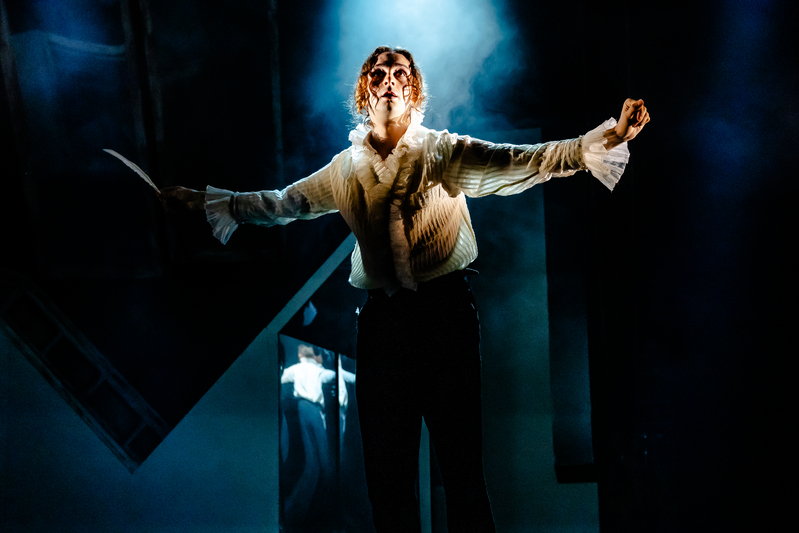 Jack Chambers in Saving Mozart. Photo by Danny Kaan.
Jack Chambers in Saving Mozart. Photo by Danny Kaan.
There seems little doubt the prolific Charli Eglinton who is credited with providing the book, music and lyrics for SAVING MOZART is something of a prodigy herself. Her output is certainly prodigious with her website boasting of significant involvement in 12 musicals. From an audience perspective however, this occasionally punchy effort remains a stylistically uneven concoction.
As the show opens, various cast members converge downstage, seemingly transfixed by a writing quill propped in a glass bottle at the edge of the footlights. In terms of iconic symbolism, it serves its purpose like most elements in co-director/choreographer Taylor Walker’s production. He, along with fellow credited director Markus Olzinger ensures that the leads and six onstage dancers are kept occupied and tightly contained within the small and tricky playing area (often whilst passing around the aforementioned composer’s feather). Amidst the well-executed routines, the playing area also manages to accommodate a swirling upright piano. In fact, the frenetic production rarely permits anyone or anything to remain stationary for any length of time. The notable exception, is a large reflective M which serves as an indomitable reminder of our protagonist’s surname throughout, courtesy of Justin William’s perfunctory, non-period set.
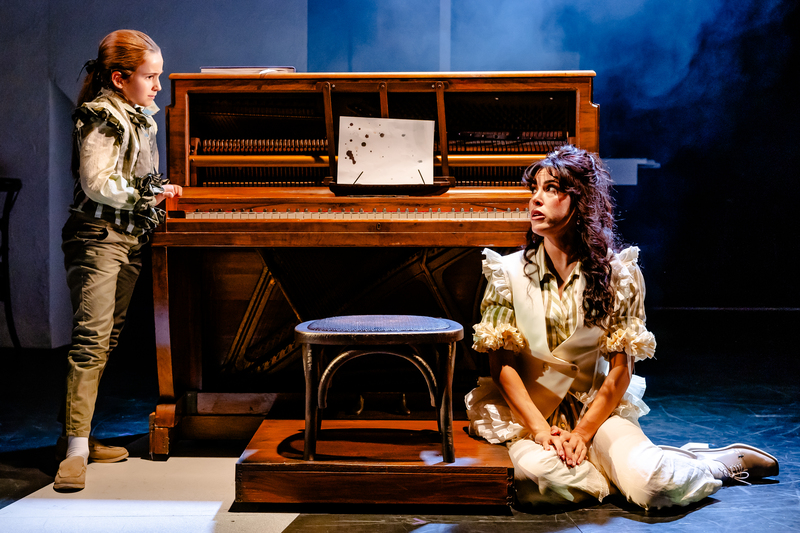 Carla Lopez Corpas and Aimie Atkinson in Saving Mozart. Photo by Danny Kaan
Carla Lopez Corpas and Aimie Atkinson in Saving Mozart. Photo by Danny Kaan
Cherubic Jack Chambers as Mozart, is once again adorned in cuffs and ruffles (courtesy of cyberpunk-meets-rococo costumes by Julia Pschdezki) having recently finished his stint as Marco in Stiletto. He acquits himself adequately and is joined by Douglas Hansell as his father Leopold and Jordan Luke Gage as his composer nemesis Salieri, though neither is able to imbue sufficient malevolence to their largely underwritten parts to maintain significant interest. It falls to the women in Mozart’s life to inject the pathos and oomph necessary to bring the show to life. The most successful elements are gently teased-out and explored by Aimie Atkinson as his sister Nannerl, Erin Caldwell as his wife Constanze and Gloria Onitiri as his mother Anna Maria. Their roles are written with greater investment and add significantly to the end result, which is further supported by the tireless energy of the ensemble: Ebony Roy-Palmer, Alfie Simmons, Anu Ogunmefun, Corey Mitchell, Sveva Bartolini and Harriette Benazir-White.
Overall, the show presents little more than a didactic and potted musical history lesson, delivered via a plethora of homogenised modern pop-rock theatre songs. These afford the extremely talented cast, momentary opportunities to impress, but their efforts are hampered by deplorably inept lyrics. Once again, it falls to a critic to suggest that a musical theatre writer collaborates with a specialist wordsmith. Not everyone is a Sondheim and the perpetual clang and thud of witless, non-existent, or forced rhymes was a bothersome distraction for much of the performance. Such issues were telegraphed by the opening number Remember Me in which the performers are required to repeatedly spell out the composer’s name (think R-E-S-P-E-C-T or D-I-V-O-R-C-E) but with an accentuated zee rather than a zed. Talk about needlessly alienating a British audience before anything has happened! In addition to Remember Me, the show includes other me numbers e.g. Watch Me, Believe Me, Listen To Me, This Won’t Break Me, and You Amaze Me, plus reprises lobbed in for good measure. Given the biographical trauma, it’s perhaps a surprise that Therapize Me doesn’t make the list. Vying for attention amidst the Six-meets-Hamiltonesque modern pop styling, are occasionally discernible strains of Mozart’s operas and concerti in the underscoring, but whilst undoubtedly ambitious, the effect isn’t as impactful as the show’s creator may imagine. A good effort, but a West End transfer doesn’t seem likely without further tightening.
SAVING MOZART continues at The Other Palace until 30 August.
Latest News
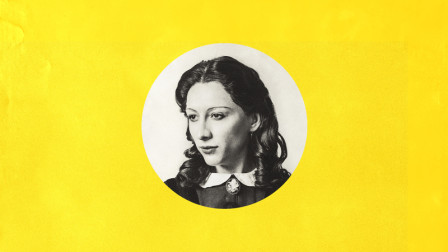
 Review Round-Up: OH, MARY! at the Trafalgar Theatre
19 December 2025 at 15:53
Review Round-Up: OH, MARY! at the Trafalgar Theatre
19 December 2025 at 15:53
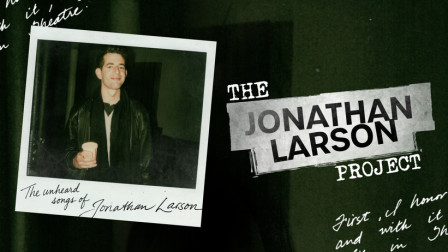
 The Jonathan Larson Project announces London premiere
19 December 2025 at 10:31
The Jonathan Larson Project announces London premiere
19 December 2025 at 10:31
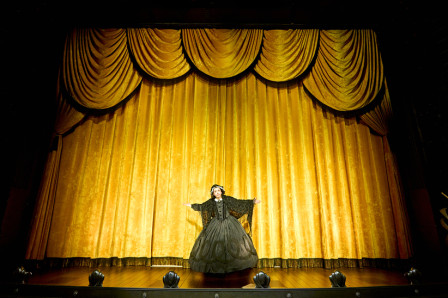
 Oh, Mary at Trafalgar Theatre Review
19 December 2025 at 09:46
Oh, Mary at Trafalgar Theatre Review
19 December 2025 at 09:46

 Kerry Ellis completes cast for West End concert of Jo - The Little Women Musical
19 December 2025 at 09:35
Kerry Ellis completes cast for West End concert of Jo - The Little Women Musical
19 December 2025 at 09:35